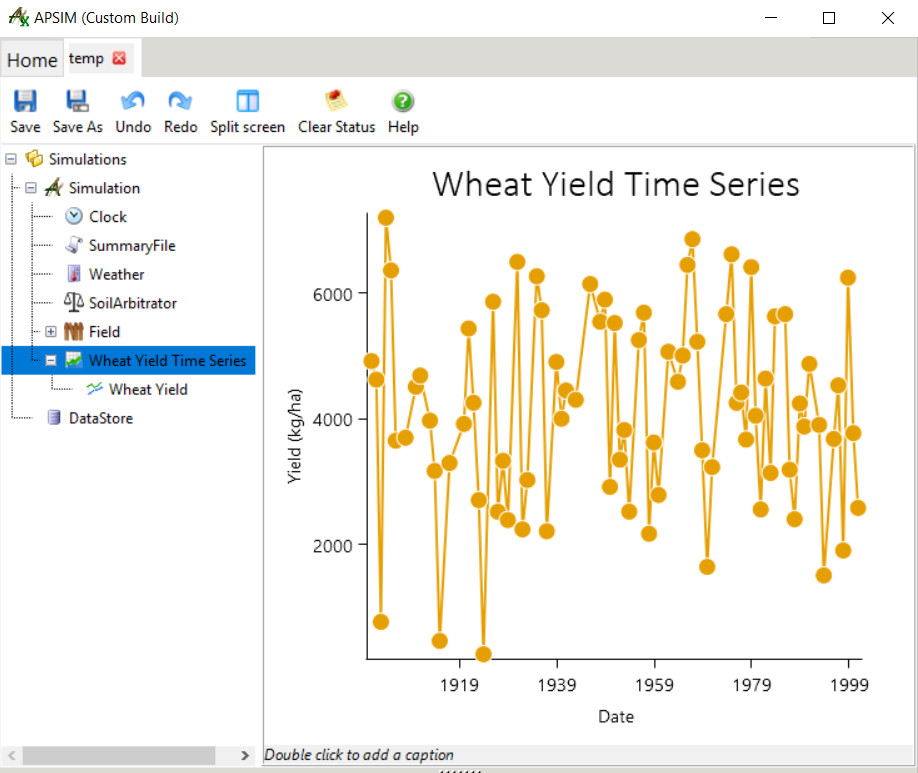
Quantifying the potential impacts of climate change on Swedish agricultural systems could help to identify upcoming opportunities and challenges.

For annual crops, reduced and poor quality yields were obtained due to the combined effects of water stress and high temperatures. Many farmers in 2018 were not able to sow their crops due to low surface soil water content, and even perennial forages were yielding lower than normal, eventually resulting in the slaughtering of livestock.

Swedish agriculture is built to a large extent on rainfed systems, and is dependent upon a recharged soil water profile in spring, and subsequent regular precipitation. In Sweden, this was recently illustrated with the extreme drought observed during the summer of 2018 ( Wilcke et al., 2020). However, it is also expected that adverse effects could happen at such latitudes, mostly because of extreme climate events, such as droughts ( Trnka et al., 2014 Wiréhn, 2018). Suitable areas for the cultivation of maize and, to a lesser extent, for wheat, might increase, while no change is expected for oats under future climate for high latitudes ( Elsgaard et al., 2012). In the Nordic countries and more generally at high latitudes, the agricultural sector could benefit from an increased arable area and longer growing seasons, due to temperature rise ( King et al., 2018) and CO 2 fertilization (e.g., Thivierge et al., 2016). These results might be relevant to agriculture studies in regions of similar latitudes, especially the Nordic countries, and support the general assumption that climate change should have a positive impact on crop production at high latitudes.Ĭlimate change is expected to have both positive and negative impacts on crop production and food security around the world ( Schleussner et al., 2018 Ray et al., 2019), depending on the area considered and on adaptation strategies ( Olesen et al., 2011). The results of this modeling exercise suggest that the cultivation of annual crops in Sweden should, to some degree, benefit from the expected increase of temperature in the coming decades, provided that little to no water stress affects their growth and development. At the northernmost site, forage maize, oats and spring wheat showed decreasing risk of crop failure with increasing temperatures. Changes in temperatures and CO 2 were the main factors explaining the changes in productivity, with ~89% of variance explained, whereas changes in precipitation explained ~11%. Forage maize showed best performances for temperature increases of 2–3☌ in all locations, except for the northernmost site, where the highest simulated yield was reached with a 5☌ increase. The optimum temperature for spring wheat was similar, except at the northernmost site (63.8°N), where the highest yield was obtained with a 4☌ increase in temperature. Projected future trends showed that barley and oats will reach a maximum increase in yield with a 1☌ increase in temperature compared to the 1980–2005 baseline. All simulation sets were compared in terms of production and risk of failure. A second set of simulations was then run using incremental changes in precipitation, temperature and CO 2 levels, corresponding to a range of potential future climate scenarios. A first set of simulations was run using site-specific daily weather data acquired between 19.

The APSIM crop model was used to simulate the productivity of four annual crops (barley, forage maize, oats, and spring wheat) over five sites in Sweden ranging between 55 and 64°N. Our aim was to investigate how increasing temperature and CO 2 as well as changes in precipitation could affect potential yields for different historical pedoclimatic conditions at high latitudes (i.e., >55°). Ongoing climate change is already affecting crop production patterns worldwide. 2Department of Crop Production Ecology, Swedish University of Agricultural Sciences, Uppsala, Sweden.1Department of Agricultural Research for Northern Sweden, Swedish University of Agricultural Sciences, Umeå, Sweden.Julien Morel 1 *, Uttam Kumar 1, Mukhtar Ahmed 1, Göran Bergkvist 2, Marcos Lana 2, Magnus Halling 2 and David Parsons 1


 0 kommentar(er)
0 kommentar(er)
